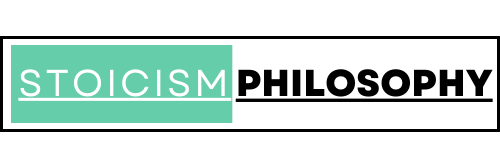The Internet Encyclopedia of Philosophy (IEP) and the Stanford Encyclopedia of Philosophy (SEP) are two prominent online encyclopedias dedicated to providing detailed, scholarly information on key topics and philosophers in all areas of philosophy.
While both projects share the goal of promoting philosophical knowledge and understanding, they differ in their origins, content, and audience.
This article aims to explore the differences between the IEP and the SEP, highlighting their distinct features and contributions to the field of philosophy.
Origins and History
The Internet Encyclopedia of Philosophy (IEP) was founded in 1995 by James Fieser, a philosopher and professor at the University of Tennessee at Martin.
The IEP was initially designed as a free online resource for students and scholars seeking detailed, scholarly information on key topics and philosophers in all areas of philosophy.
The IEP’s content is primarily based on original contributions by professional philosophers, with a focus on providing a comprehensive and accessible overview of philosophical concepts and thinkers.
In contrast, the Stanford Encyclopedia of Philosophy (SEP) was founded in 1995 by Edward N. Zalta, a philosopher and professor at Stanford University. The SEP was initially conceived as a comprehensive online reference work that would provide detailed, scholarly articles on a wide range of philosophical topics and thinkers.
The SEP’s content is also based on original contributions by professional philosophers, with a focus on providing in-depth, peer-reviewed articles that are both accurate and accessible to a broad audience.
Content and Structure
The IEP and SEP differ significantly in terms of their content and structure. The IEP is organized into a series of articles, each focusing on a specific topic or philosopher.
These articles are typically shorter and more concise than those found in the SEP, with an average length of around 5,000 words. The IEP’s articles are also more general in scope, covering a broad range of philosophical topics and thinkers.
In contrast, the SEP is organized into a series of longer, more in-depth articles that focus on specific topics or thinkers. These articles are typically longer, averaging around 10,000 words, and provide a more detailed and comprehensive overview of the subject matter.
The SEP’s articles are also more specialized, covering a narrower range of topics and thinkers.
Audience and Purpose
The IEP and SEP differ in their intended audience and purpose. The IEP is primarily designed for students and scholars seeking a general introduction to philosophical concepts and thinkers. The IEP’s articles are written in a clear and accessible style, making them suitable for undergraduate students and general readers.
In contrast, the SEP is designed for a more advanced audience, including scholars and researchers seeking in-depth, peer-reviewed articles on specific topics and thinkers. The SEP’s articles are written in a more technical and specialized style, making them suitable for graduate students and experts in the field.
Peer Review and Quality Control
Both the IEP and SEP have rigorous peer-review processes in place to ensure the quality and accuracy of their content. The IEP’s articles are reviewed by a team of editors and peer reviewers, who assess the article’s content, style, and accuracy before it is published.
The SEP’s articles are also reviewed by a team of editors and peer reviewers, but the process is more extensive and rigorous. The SEP’s articles are reviewed by multiple experts in the field, who assess the article’s content, style, and accuracy before it is published.
The SEP also has a more formalized peer-review process, with articles being reviewed by multiple reviewers and editors before they are published.
Funding and Support
The IEP and SEP differ in terms of their funding and support. The IEP is primarily funded by the University of Tennessee at Martin, with additional support from individual donors and grants.
The SEP is funded by a variety of sources, including Stanford University, the National Endowment for the Humanities, the National Science Foundation, and individual donors. The SEP also has a formalized fundraising process, with donations and grants supporting the project’s operations and content development.
Conclusion
In conclusion, the Internet Encyclopedia of Philosophy (IEP) and the Stanford Encyclopedia of Philosophy (SEP) are two distinct online encyclopedias that differ in their origins, content, and audience.
While both projects share the goal of promoting philosophical knowledge and understanding, they differ in their approach and scope. The IEP is designed for a general audience, providing a broad overview of philosophical concepts and thinkers.
The SEP is designed for a more advanced audience, providing in-depth, peer-reviewed articles on specific topics and thinkers.
Both the IEP and SEP are valuable resources for students and scholars of philosophy, offering a wealth of information and insights into the field. By understanding the differences between these two projects, readers can better appreciate their unique contributions and the value they bring to the field of philosophy.
